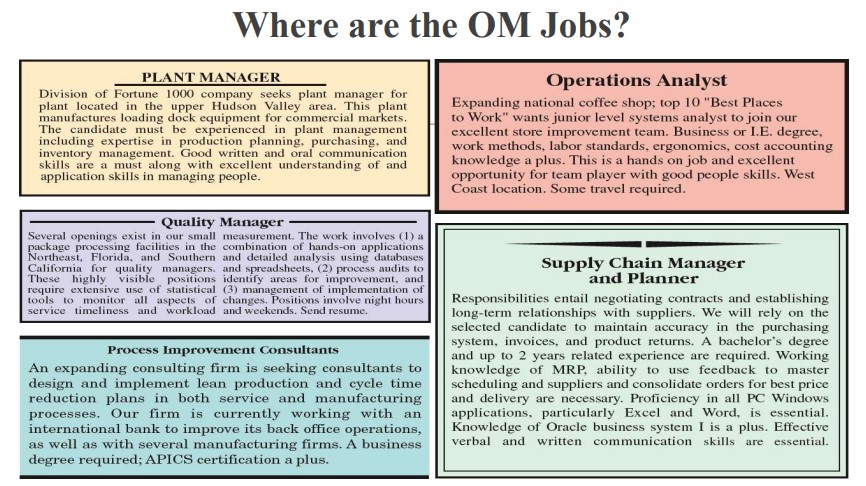Operations Management (Grade A)
Summary:
BMIS360’s Operations Management course offers insights into operational productivity, the distinction between goods and services, and productivity measurement and enhancement. The course details operations management’s essential functions, including planning, organizing, staffing, leading, and controlling. The course discusses ten strategic decisions, which include the design of goods and services, managing quality, process and capacity design, location strategy, layout strategy, human resources and job design, supply-chain management, inventory management, scheduling, and maintenance. Each decision holds significance, impacting quality, resource management, costs, customer satisfaction, and overall operational efficiency. Furthermore, the course explores opportunities for operations management jobs in areas such as technology, customer service, quality, and productivity improvement. It also differentiates between goods and services. Goods, being tangible, can be inventoried, have consistent definitions, and involve low customer interaction. Services, however, are intangible, unique, and involve high customer interaction, and their production and consumption occur simultaneously.
Excerpt:
Operations Management
School of Business
Department of Management Information Systems
BMIS360: Operations Management – Chapter 1 | Part 2
Operations & Productivity
Learning Objectives
– Define operations management
– Explain the distinction between goods and services
– Explain the difference between production and productivity
– Compute single-factor productivity
– Compute multifactor productivity
– Identify the critical variables in enhancing productivity
⮚ What Is Operations Management?
⮚ Organizing to Produce Goods and Services
⮚ Why Study OM?
⮚ Operations in the Service Sector
⮚ The Productivity Challenge
◦ Productivity Measurement
◦ Productivity Variables
◦ Productivity and the Service Sector
What do Operations Managers Do?
Basic Management Functions:
⮚ Planning
⮚ Organizing
⮚ Staffing
⮚ Leading
⮚ Controlling
Ten Strategic Decisions
TABLE 1.2 – DECISION
1. Design of goods and services
2. Managing quality
3. Process and capacity design
4. Location strategy
5. Layout strategy
6. Human resources and job design
7. Supply-chain management
8. Inventory management
9. Scheduling
10. Maintenance
The Strategic Decisions
1. Design of goods and services
◦ Defines what is required of operations
◦ Product design determines quality, sustainability and human resources
2. Managing quality
◦ Determine the customer’s quality expectations
◦ Establish policies and procedures to identify and achieve that quality
3. Process and capacity design
◦ How is a good or service produced?
◦ Commits management to specific technology, quality, resources, and investment.
4. Location strategy
◦ Nearness to customers, suppliers, and talent.
◦ Considering costs, infrastructure, logistics, and government.
….


Reviews